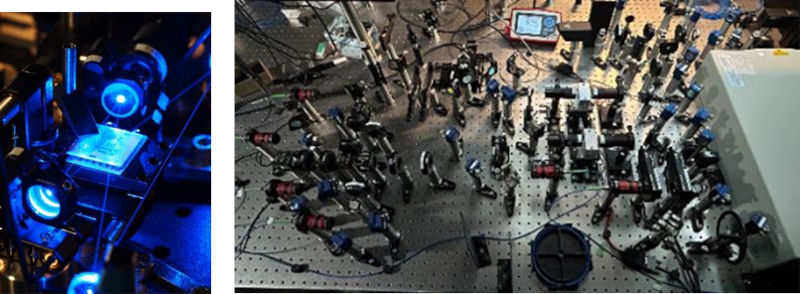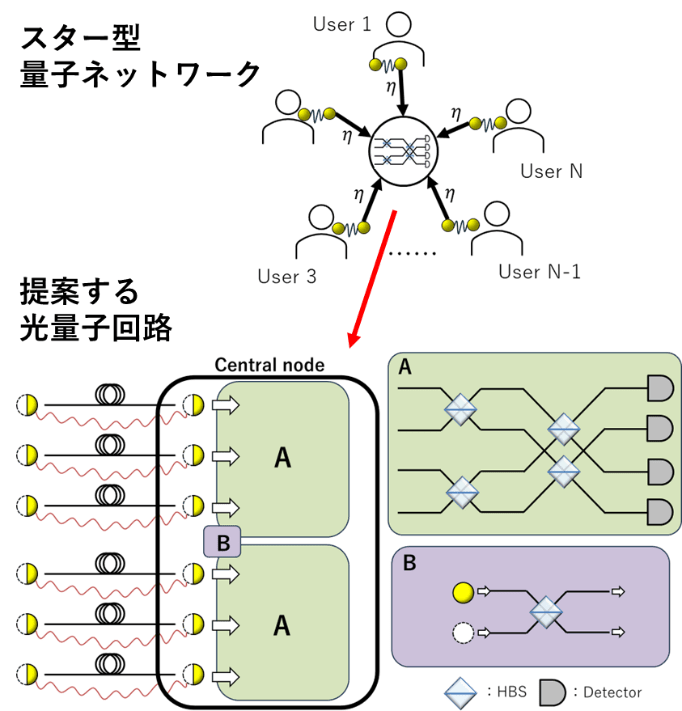Progress Report
Scalable and Robust Integrated Quantum Communication System[2] Quantum optical communication technology enabling precise control of quantum light
Progress until FY2024
1. Outline of the project
The aim of this project is to develop quantum optical communication technologies for the distributed quantum computing system where quantum computer nodes are connected via entangled photons.
Toward this goal, we employ two approaches: one is the two-photon interference approach and the other is the single-photon interference approach. The former is more matured and suitable for the near-term demonstration of the distributed quantum computing system. The latter is technically more challenging, but has potential advantages, such as loss-tolerance and suitability to wavelength-division-multiplexed quantum memories. The project includes developments of entangled photon sources, their evaluation techniques, phase locking between distant entangled photon sources, entanglement swapping, entanglement photon routing technologies. These technologies are directly contributing to develop the scalable and robust integrated quantum communication systems.

2. Outcome so far
So far, we have successfully developed various underlying technologies for quantum optical communication, such as quantum frequency converters, entangled photon sources directly connecting the quantum memory wavelength and the telecom wavelength, frequency stabilization, optical phase locking and the loss-tolerant transmission techniques. Another important technology is the measurement and evaluation of the entangled photons. For bipartite entangled photon-pairs, the technique called the quantum state tomography is well developed and allows to reconstruct the precise quantum state of the entangled photons. However, for multipartite entangled photons, the quantum state tomography is not practical since it requires too many different measurements and too long time to complete it. Instead, we developed a simpler and time efficient new measurement technology, which captures the main feature of entanglement and allows to reconstruct the quantum state with reasonable accuracy. The idea was experimentally demonstrated for tripartite entangled photons. Figure 2 shows our experimental setup and result. The blue bars of the latter are the evidence that the three modes are quantum mechanically correlated, i.e. entangled.


3. Future plans
Our developed technologies are ready to be integrated to a prototype of the integrated quantum communication system. This prototype demonstration will be done by collaboration of all R&D items of the project.